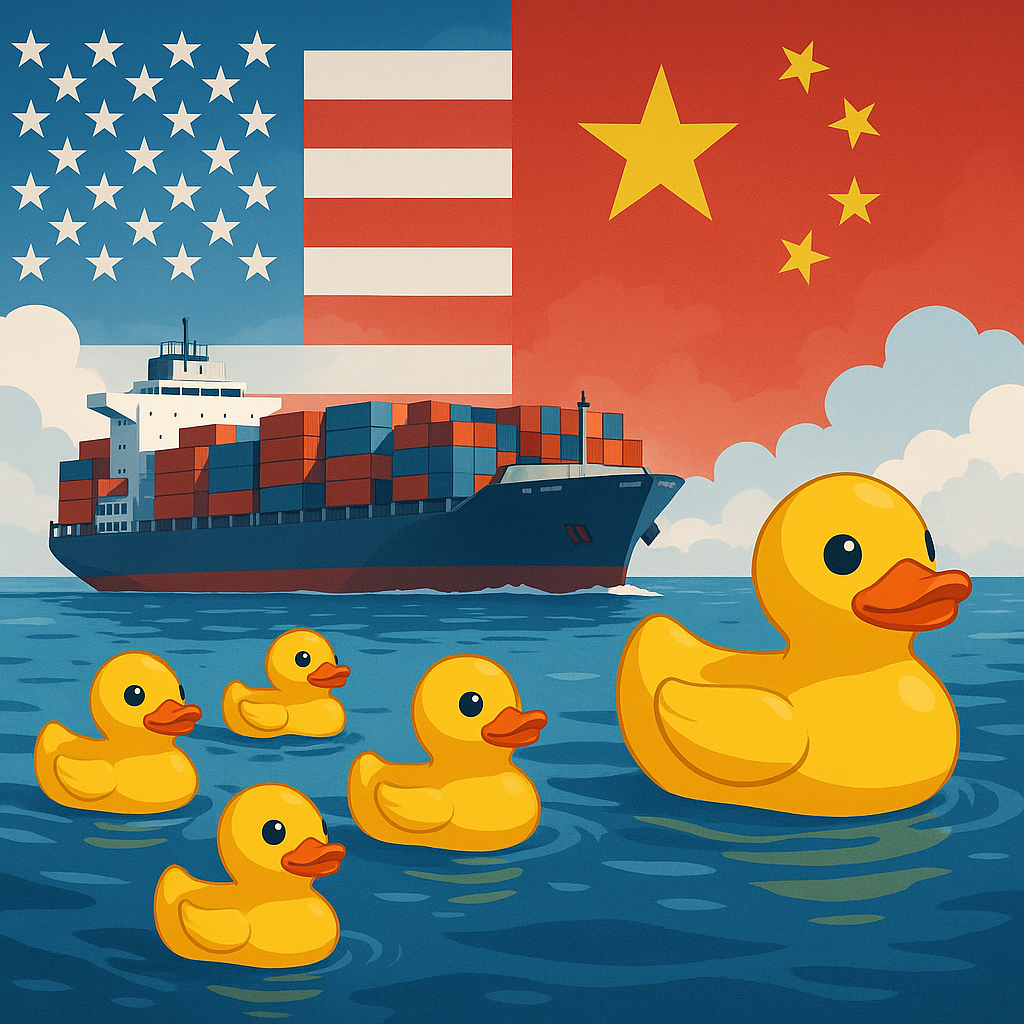Quacking Up Prices
When you think of rubber ducks, you might imagine them bobbing happily in the tub or perched on a museum shelf. Behind those cheerful quacks, however, lies a complex web of tariffs and trade policies. In early 2025, the U.S. government imposed a tariff of about 145 percent on Chinese imports, raising the average effective tariff rate to 20.2 percent—the highest since 1911. Analysts at Yale’s Budget Lab estimate that these levies add around 2.0 percent to overall consumer price levels and cost the average U.S. household about $2,700 each year. In a survey of small and medium‑sized toy companies, nearly half feared they would go out of business if these tariffs persisted.
Ripple Effects on Imports
Rubber ducks may be whimsical, but their supply chain is anything but. Roughly 80 percent of toys sold in the United States are manufactured in China, and 73 – 78 percent of all U.S. toy imports come from Chinese factories. When tariffs shot up to 145 percent, importers cancelled orders, retailers delayed shipments, and a U.S.‑owned toy factory in China cut production by 60 – 70 percent while laying off a third of its workers. With supply squeezed, wholesale prices jumped and the ripple spread from container ships to bathtub toys. Toy prices overall rose 2.2 percent in May 2025 alone.
Rubber Ducks Caught in the Crossfire
Our beloved rubber ducks aren’t exempt from these headwinds. Because so many are manufactured overseas, tariffs directly increase the cost of each quacker. Domestic producers, meanwhile, often rely on imported vinyl and dyes and face higher input costs. After public outcry and fears of supply shortages, the United States and China agreed to temporarily reduce tariffs to 30 percent for 90 days. Yet this reprieve offers little long‑term certainty for businesses or consumers.
Navigating the Storm
At The Rubber Duck Museum, we’re watching these developments closely. Higher costs may mean our little yellow friends arrive slightly later or with heftier price tags, but we’re working with a mix of local artisans and trusted international suppliers to keep prices reasonable and quality high. We’re also exploring eco‑friendly materials and domestic manufacturing options so that future ducks aren’t quite so tangled in tariffs.
Tariffs may seem like the stuff of economists and politicians, yet they have a very real impact on the toys that bring joy to children and adults alike. In today’s interconnected world, even a humble rubber duck is part of a global story—one shaped by international diplomacy, shipping routes, and the price of polymer resin. By understanding these forces, we can better appreciate the journey each duck takes before it graces your bathtub or museum shelf.
How Tariffs Affect Rubber Ducks: Production, Imports & Prices

- August 7, 2025
Blog Post
Related Articles
Lorem ipsum dolor sit amet, consectetur adipiscing elit. Suspendisse varius enim in eros elementum tristique.
August 9, 2024
Dive into the enchanting world of Seiberling's Disney toys, a treasure trove of vintage collectibles that have captured...
June 17, 2024
Dive into the fascinating journey of the rubber duck, from its humble beginnings to becoming a bath-time icon.
Blog Post CTA
H2 Heading Module
Lorem ipsum dolor sit amet, consectetur adipiscing elit. Suspendisse varius enim in eros elementum tristique.
Subscribe for
Our Blog
Lorem ipsum dolor sit amet, consectetur adipiscing elit. Suspendisse varius enim in eros elementum tristique.
